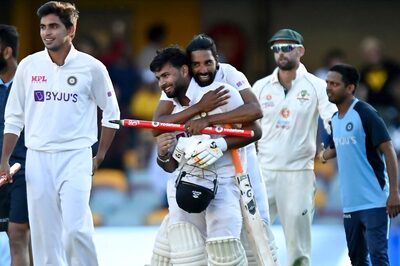
views
Economic Surveys are official documents presenting key economic figures of the past one year and indicating the policy framework that should be appropriate. To be precise, the framework that the chief economic adviser (CEA) deems fit for the country. Often, it is also the wish list of the CEA, who is normally a reformist. As such, the survey is usually at variance with what the government announces the next day in Budget.
However, Economic Survey 2018-19, prepared by CEA Krishnamurthy Subramanian, doesn’t seem keen on charting a reformist course. Indeed it begins with skepticism about, if not disdain for, what it calls the “traditional Anglo-Saxon view of the economy.”
In the very first chapter, it says, “We depart from traditional thinking by outlining a growth model that views the economy as being inconstant disequilibrium — a virtuous cycle or a vicious cycle. When the economy is in a virtuous cycle, investment, productivity growth, job creation, demand and exports feed into each other and enable animal spirits in the economy to thrive. In contrast, when the economy is in a vicious cycle, moderation in these variables dampen each other and thereby dampen the animal spirits in the economy” (emphasis in the original).
The survey talks about a couple of departures from traditional thinking. The first is by imbibing some of the new learning from the economics literature following the Global Financial Crisis. It views “the economy as being in a constant state of disequilibrium as captured by a virtuous or a vicious cycle.”
Second, instead of trying to address the issues of job creation, demand, exports, and economic growth as separate problems (which traditional thinking does), “these macro-economic phenomena exhibit significant complementarities. Therefore, understanding the ‘key driver’ and enhancing the same enables simultaneous growth in each of the other macro phenomena.”
Call it New Economics or Modinomics, as articulated by CEA Subramanian, this is how it is. The defining feature of this line of thinking is “nudge”, i.e., “incentivize good behavior or dis-incentivize bad behavior, such as subsidies for renewable energy and taxes on tobacco.” The survey favours “nudge policies that lie between laissez faire and incentives.”
All this is fine, but the key issue is missing: there is very little emphasis on reforms in it. Not that there is no mention of reforms, but it is about liberalising the labour regime in states and judicial reforms. To the specific question that this writer asked about opening up the farm sector, the CEA responded that it would be done later. The question was asked at the press conference after the tabling of the survey in Parliament by Finance Minister Nirmala Sitharaman.
The survey is bullish in tone and tenor. It says that sustained real GDP growth rate of 8 per cent needed for a $5 trillion economy by 2024-25. It stressed on reorienting policies for the growth of micro, small and medium enterprises (MSMEs).
It focuses on enabling MSMEs to grow for achieving greater profits, job creation and enhanced productivity. It calls firms with less than 100 workers as “dwarfs” as, despite being more than 10-year-old, they account for more than 50 per cent of all organised firms in manufacturing by number.
The contribution of dwarfs to employment is only 14 per cent and to productivity is a mere 8 per cent. Large firms (more than 100 employees) account for 75 per cent employment and close to 90 per cent of productivity despite accounting for about 15 per cent by number, the survey says, adding that MSMEs should be unshackled and enabled to grow.
This can be done by way of a sunset clause of less than 10 years, with necessary grand-fathering, for all size-based incentives. Labour law restrictions should be eased to create significantly more jobs, as evident from Rajasthan. Priority sector lending (PSL) guidelines should be recalibrated for direct credit flow to young firms in high-employment elastic sectors.
The survey also focuses on service sectors such as tourism, with high spillover effects on other sectors. This is a very good suggestion. Hitherto tourism was neglected by decision and policy makers. “Developing key tourist centres will have ripple effects on job creation in areas such as tour and safari guides, hotels, catering and housekeeping staff, shops at tourist spots, etc.,” the survey says.
“It is possible to identify 10 tourism spots in each of the larger 20 states and five spots in the nine smaller states and build road and air connectivity in these tourist attractions, which would boost economic activity along the entire route and would also reduce the migration of the rural labour force who form a major proportion of the total labour force.”
Needless to say, if implemented in letter and spirit, these recommendations will go a long way in boosting growth and generating employment. However, one feels that a little more attention on liberalisation in the survey might have — to use its favoured term — “nudged” the government to move fast on reforms.
(The author is a freelance journalist)


















Comments
0 comment